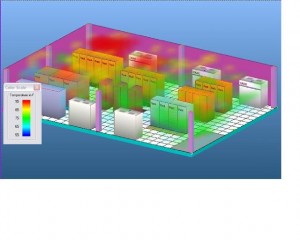From Innovations, a website published by Ziff-Davis Enterprise from mid-2006 to mid-2009. Reprinted by permission.
The EPA estimates that data centers eat up about 1.5% of all electricity in the United States and that nearly a quarter of that power is wasted.
As I noted last week, energy waste is one of the dirty little secrets of corporate data centers. Add on to that the money lost due to PCs sitting idle overnight and the waste inherent in abandoned and underutilized servers and you have a lot of money just sitting out there waiting to be found.
Energy-saving is mostly a matter of common sense. The simplest approach may be to start, literally, at the ground floor. If you peer under the raised flooring in your data center, you’ll probably find pockets of cables clustered together. These could be inhibiting air flow. By re-cabling and deploying vented floor tiles in strategic locations, you can cut energy waste with almost zero capital expense. Many consultants now specialize in this area, and bringing in an expert can save time and money in the long run. This article tells the story of one company that saved him $1 million annually in power costs through this simple measure.
The next step is to analyze your server use to determining what can be shut down and consolidated. One speaker at last fall’s Data Center World conference proposed a radical idea: if you don’t know who’s using a server, shut it down. Mark Monroe, Sun Microsystems’ director of sustainable computing, said that his group tried this approach and discovered that nearly 12% of its servers weren’t being used for anything. The application owners had moved on and no one had bothered to shut down the application.
Consolidate the servers you’re using into one location and direct your cooling resources to that hotspot. Use virtualization to pack more physical servers onto fewer virtual ones. By some estimates, about 70% of servers in the data center are only supporting one application. Utilization rates of less than 15% on single servers are not uncommon. These are ideal candidates for virtualization.
Air conditioning is responsible for the greatest energy waste. The problem is that most data center managers don’t know where all their hotspots are, so they take a brute force approach and cool the entire data center to a certain level. The reality is that the hottest servers probably consume a minority of floor space.
While high-density servers can consume less power overall than the individual machines they replace, there’s no reason to structure your cooling plan around the needs of maybe 10% of your hardware. Several vendors now sell server racks that are optimized for cooling. Also, the water cooling technique that was common in the mainframe days two decades ago is staging a revival as server consolidation comes back into vogue.
Crank up the heat
Once you’ve isolated your most power-consumptive servers, turn up the thermostat on the rest of them. Most servers can operate perfectly well at temperatures of as much as 100° (be sure to check with your supplier before trying that, though) and each 1° increase in temperature can save about 4% in energy costs, according to Sun’s Monroe.
You should also become familiar with the EPA’s Energy Star initiative. This program sets standards for efficient energy use and publishes lists of products that meet them. Needless to say, computers are a major Energy Star focus. Did you know, for example, the EPA estimates that enabling basic power management features that come with the Windows operating system can save up to $75 per computer per year? While there are legitimate reasons to leave PCs on all night at times, simple open source network tools can enable systems managers to shut down unused computers and still have the flexibility to power them on when needed. The Energy Star website has a list of software tools for remote power management as well as a power management savings calculator.
A somewhat more radical option is to outsource all or part of the data center. While there are many factors involved in this decision, the potential energy savings of such a move shouldn’t be underestimated. In the case of total data center outsourcing, contractors should be able to provide you with power savings estimates to factor into your calculations. Amazon’s S3 storage service is one of many specialized offerings that are emerging. Amazon sells cheap off-site data storage. One of its appeals is that users don’t need to pay for — and cool — on-site storage area networks.
Most technology vendors now have green initiatives, and you should become familiar with what your key vendors are doing. For example, IBM has made its own IT operations a showcase of energy efficiency. In the course of consolidating 155 data centers worldwide down to just seven, it’s cut operational costs by $1.5 billion. This podcast tells more.
What are you doing to save energy in your data center? Write your suggestions in the comments are below.

 The graphic at right may look kind of cool, but it’s anything but. It’s actually a simulation of the heat distribution of a typical data center prepared by
The graphic at right may look kind of cool, but it’s anything but. It’s actually a simulation of the heat distribution of a typical data center prepared by